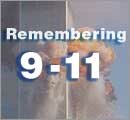|






|
|
Chilling report on Nuclear attack heard in US Senate Committee
By Mary Beth Sheridan
Washington Post Staff Writer
Wednesday, April 16, 2008; B04
Concerned that not enough attention is being paid to the risk of a
nuclear attack, a Senate committee yesterday looked at the
consequences of such a terrorist strike in Washington -- and said
that more could be done to save lives.
A hearing, called by the Committee on Homeland Security and
Government Affairs, featured charts showing the horrific effects of
a small nuclear device detonating near the White House. It was the
panel's third session in recent months on the threat of a nuclear
explosion.
"The scenarios we discuss today are so hard for us to contemplate
and so emotionally traumatic that it is tempting to push them
aside," said Sen. Joseph I. Lieberman (I-Conn.), the panel's
chairman. "However, now is the time to have this difficult
conversation, to ask the tough questions, then to get answers."
The committee summoned witnesses yesterday who said the risk of such
an attack on U.S. cities has grown in the past five years because of
the spread of nuclear technology and the growth of a global
terrorist movement.
"I definitely conclude the threat is greater and is increasing every
year with the march of technology," said Cham E. Dallas, director of
the Institute for Health Management and Mass Destruction Defense at
the University of Georgia.
Yet the experts agreed that even such a disaster didn't constitute
the doomsday scenario imagined during the Cold War. Most District
residents would survive. And "much could be done to save lives" if
the government made the right preparations in advance, said Ashton
B. Carter, co-director of the Preventive Defense Project at the John
F. Kennedy School of Government at Harvard University.
At the committee's request, Dallas prepared a report on the effects
of a small nuclear device exploding near the White House. A 1-
kiloton device, which could fit into a suitcase, could kill about
25,000 people, he said. A 10-kiloton explosive, which could be
hidden in a van, could kill about 100,000, Dallas said.
The 10-kiloton blast would release fatal doses of radiation in the
immediate area and destroy almost all buildings within a half-mile
radius, he said. The intense heat would burn people for many blocks
and spark fires. Windows would shatter for miles, Dallas testified,
gesturing to a color-coded map that showed damage as far out as
Union Station.
The danger wouldn't be limited to those in the blast area. A
radioactive plume would start drifting from the blast point,
subjecting those in its path to lethal levels of radiation, Dallas
said. The plume's direction would be determined by weather
conditions.
Dallas's model envisions a 10-block-wide "death plume" moving east,
the direction the wind typically blows in Washington. It billows
down Constitution Avenue, reaching Benning Road NE in 30 to 60
minutes.
"With proper communication, people can flee from the plume area,"
Dallas said, noting that they can walk or run from what will likely
be a narrow band of high danger. But, he added, authorities need
to "put more effort" into testing their ability to swiftly alert
those in danger.
Most people outside the blast zone or the path of the plume should
stay in their homes for at least the first few days after an attack,
and will probably suffer limited health problems, the experts said.
Dallas predicted that the local medical system would be overwhelmed,
but said that authorities could save lives with better preparation.
For example, Dallas suggested training medical professionals such as
pharmacists and veterinarians to provide burn care and other
assistance. Community volunteers living near Howard University
Hospital, which would be outside the blast zone, could be organized
in advance to clean wounds and help in other ways, he said.
"Burn care is a nightmare. And we're completely unprepared," Dallas
said, noting that the entire country only has specialized burn
facilities for 1,500 patients. "Ninety-five percent of burn victims
will not receive care. And most of them will die."
Asked for comment, emergency-response officials in the region said
they had made great strides in preparing for a catastrophic event.
Chris Geldart, who oversees the National Capital Region office at
the Department of Homeland Security, said local hazmat teams can
quickly run data to predict the path of a radiological or chemical
cloud. Homeland Security recently held an exercise with the
governors of Maryland and Virginia, as well as D.C. Mayor Adrian M.
Fenty (D), on how to inform the public about a dangerous plume.
As for casualties from a nuclear device, "the amount of burn victims
that you're going to have would stress any system," Geldart said.
The National Disaster Medical System would be activated to whisk
patients to other states for treatment, he said. "There's been a lot
of planning that has happened within this region, especially at the
federal level, for the 10-kiloton."
Darrell Darnell, head of the city's homeland security office, said
in a statement, "We are confident that the District is prepared to
respond to a catastrophic incident."
He said that the city's emergency communication tools include a
reverse-911 calling system, text alerts, city Web sites and the
Emergency Alert System, which sends messages over radio and
television.
Geldart disagreed with an idea raised by Carter at the hearing:
having the federal government assume control after a nuclear
explosion. "The federal government is not going to wrest control
from a state, as long as state and local governments are capable of
responding," Geldart said.
|